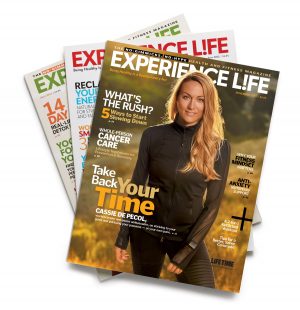The start of a new year is a great time to re-evaluate and adjust the way you’re spending your time and energy. So this week on The Living Experiment, we pull back the curtain on how we’re doing that with one project in particular: the podcast itself.
As a way of modeling a reflective and strategic process you can use in your own life, we discuss our original goals and intentions in doing the show, where we feel like we’re on course, and where we feel we’re losing steam or burning valuable time and energy (mostly with the copious amounts of behind-the-scenes work).
We also invite input from you on our initial ideas for making pragmatic adjustments in ways that won’t undermine the value of the podcast for us and our listeners.
“What Now?” Episode Highlights
- Dallas and Pilar share what’s going on in their lives, the big changes they made in 2016, and what they’re re-assessing (3:10)
- Reflections on creating and producing a podcast (7:55)
- Positive feedback from listeners that confirms the podcast is achieving its primary goal of helping people rethink their choices and improve their lives (11:30)
- What’s been working, and what we feel needs to change to support a more sustainable process (don’t worry, we’re not quitting!) (13:15)
- The limitations of using social media for communication and promotion, and why we’re dropping the podcast’s Twitter feed at the very least (25:00)
- The hours that go into these show notes, and our desire to know if they are valuable to listeners (Let us know!) (33:50)
- Re-thinking the content of the weekly newsletter (42:15)
- Modeling the reflective process — scrutinizing goals and objectives and what you’re doing to meet them, deciding what works and what doesn’t, identifying options, and facing fear of change (45:55)
- The love for the work and fear of self-promotion that Dallas and Pilar share (50:10)
- Final thoughts on the importance of periodic reflection (56:05)
- Suggested experiments for the week (58:15)

Think about a task or activity that isn’t serving you, and swap it with something you’ve wanted to try or do more of. You may find that eliminating what isn’t bringing value or satisfaction will free up the time, energy, or money you need to do sometime more rewarding.

Pick one area of your life that feels overworked or an activity you’ve come to dread, and renegotiate the commitment. Give yourself permission to not do a thing you don’t want to do, or do it in a way that’s more enjoyable.
Bonus experiment:
Let us know what you think about our proposed changes to the podcast! We’d love to know if we talked about eliminating something that you find extremely valuable, if you think we’re on the right track, or anything else you want to share.
Share the Love!
If you’re enjoying The Living Experiment, please tell your friends about it (check out the “Share This” widget and other social-media tools on this page). With so many podcasts available, people really appreciate personal recommendations.
We’d also love to have you connect with us on Facebook — share your thoughts, stories and reflections there.
Resources
- More on the power of regular reflection from productivity expert David Allen in the Experience Life article “Getting Things Done: Review”.
- How to rethink your commitments, via Zen Habits: Edit Your Life, Part One: Commitments. The whole “Streamline Your Life” series looks good!
- Tips for reclaiming time and energy by adjusting your social media habits with Dallas’s More Social Less Media program.
PLUS . . .
- Sign up for The Living Experiment newsletter so you can stay up to date with us, get free gifts, and receive new-show notifications as soon as each new episode is released.
- Subscribe to The Living Experiment on Apple Podcasts to have fresh episodes delivered to your podcast feed each week.

